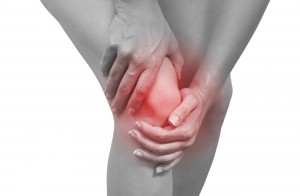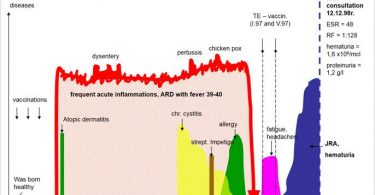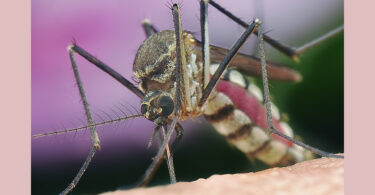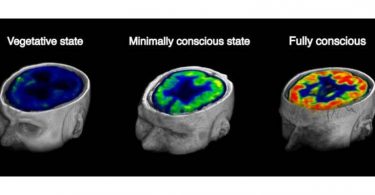The patient was a lad of 12 years, thin, dark and poorly nourished. The trouble began insidiously with pain in the right and left knee, the right side being the one most sorely hit. At that time the member was pale and stiff and slightly swollen. Motion was quite impossible. There was pain on movement or upon letting it hang down, with a bruised condition in the popliteal space. The involved area was sensitive to touch. There was a stiffness in the legs and shooting pains in the hip and the small of the back. The knees were tottery and knocked together. Later on there was shortening and stiffness of the hamstring group and a photograph of the case was shown by the doctor.
In gaining a picture of this case Dr. Griggs noted the darkly sallow type of skin and the emaciated state. He was always eating, was weak (he could hardly go upstairs) and never seemed to mind the cold in the least. He came to office with a thin coat on but had his knee bandaged heavily. There was an enlargement of the glands in the neck and his cough was only caused by irritation behind the sternum. The lad often awoke sweating in the morning. The nose was stopped up and the bowels were irregular — constipation or diarrhea to be incriminated.
After April 1913 the knee-joint was greatly swollen, puffed up, and round on both sides. It was pale red in general but there were dark red, inflamed and angry looking spots which were very painful and there was fluctuation over one spot. Shooting stitches and burning was noted and the knee was very hot to the touch. For a matter of several months the knee has been partially flexed and the lad cannot bear his weight on the floor. The tip of the toe can only touch the floor when he is standing and he screams if you try to flex or extend the knee joint
The following drugs were used by the doctor but without avail, as far as curing the lad was concerned— Causticum, Ferrum phosphoricum, Guaiacum, Phytolacca, Phosphorus and Salicylic acid. Sulphur was used intermittently. As the results were not satisfactory to the doctor a careful repertorial analysis was made and the drug decided upon was iodium. The patient was started out on the 30th and after a course with this potency to depletion of effect, the 2c was given and finally the Im.
After two weeks one of the inflamed spots discharged a watery, bloody pus which was very thin. The sinus was very much inflamed, worse at the area of the edges.
The patient was kept in bed and fed upon what he could be provided with in the way of food. In ten months time the boy could walk and the knee was practically well. The lad gained over thirty pounds in weight under the kindly treatment and he is now working for a general merchandise store in Doylestown.
This case was reported in the Hahnemannian Monthly, Volume-II Jan – Dec I917.





Both knee pain (Rt>Lt)since 5 years my age 60 years. pl. solve my problem by homeo medicines.